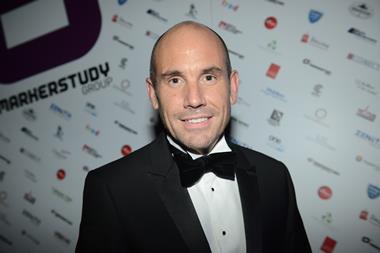In October last year VisionTrack’s IoT platform processed 50 million miles of driving data which could benefit insurers
When Simon Marsh, managing director of VisionTrack founded the video telematics company his intention was to save lives after the fatality of one of his truck drivers.
Back in 2006, heavy goods driver Ian Gill died on the M25 when a car lost control at a turn-off. The car driver was apparently distracted leading to three deaths, this included Gill, a father and his two-year-old daughter after both the car and the truck collided with the concrete central reservation bursting into a ball of flames.
The death of Gill, Marsh’s friend and employee, was a contributory factor in Marsh founding in-vehicle CCTV firm VisionTrack in 2016 to improve video telematics using components such as fatigue monitoring, distraction, sensors and warning technology, with the long-term aim of preventing tragedies such as these.
Since then, the business has evolved with an expanded team, and Marsh believes that he can foresee how the Internet of Things (IoT) will change the face of general insurance and how it is distributed.
Now Marsh has ambitions to grow the business, but stands firm to working from the customer experience backwards to achieve success. He plans to go global targeting the US and Europe imminently.
It is currently moving over to the second version of its IoT platform, called Autonomise.AI which is device-agnostic, meaning it is compatible with most systems. According to VisionTrack, It can collect, interpret and analyse vast amounts of sensory data that can notify the user, commercial businesses and insurers of risk.

Telematics is just one of the topics to be covered at BrokerFest, don’t miss out, book here
Last October, VisionTrack’s platform processed up to 50m miles of driving data. It monitored over 16.2bn data points and uploaded 386,212 event videos that it deemed worth reviewing via the systems algorithm.
This equates to 3.1m hours of video which would take 130,000 days to watch - the average life span of a person is 29,000 days.
Marsh told Insurance Times: “We see insurance changing in commercial fleet and commercial insurance in general, we see it going into connected vehicles [as] there’s so much more data available for insurers but it just depends whether it is actually useable for them, and that’s our job.
“All this data is available, but you do need platforms such as ours to make sense of it. We are moving into a computer vision system - I see that as the future of telematics.”
The videos can be viewed without human intervention, which would reduce cost for insurers as they would not need to rely on staff to monitor this.
Many fleets need this data on a single platform due to the size of their company.
VisionTrack estimates that the connected vehicle insurance market could be worth £30bn by 2030.

Simon Marsh winning Claims Product Solution of the Year – Service Provider (Technology) last year at the Claims Awards
Loss ratios
Marsh believes that using this data is a good thing for insurers as it could improve loss ratios. It is the chosen video telematics provider for Tesco, Asda, Heathrow Airport, Trimble, and Tom Tom.
“Insurers will actually be able to use this [live] data to write risk properly instead of it being historical, we are collecting more live data in real time. Shoot where the puck is going, not where it’s been.”
This can be used to assess the risk of a particular driver and allow insurers to price risk more accurately. Marsh believes that this is what gives VisionTrack its edge as insurance has traditionally used historical data to predict future risk.
VisionTrack is using machine learning to do this, however it is a constantly evolving process. It works with insurers and they can see their own data.
He gave the example of an MGA working with VisionTrack that has seen a significant reduction in the frequency of claims costs.
Marsh named tailgating as the biggest cause of incident claims in motor, which is often down to driver distraction most of the time.
VisionTrack uses a sensor which can monitor the distance between vehicles and send a warning if they are too close. Its platform can process this and alert the fleet manager or the insurer of this.
“Our platform is designed to take any sensory data from any device. It makes risk insurers mangers lives much easier,” he said.
Going by the saying “making the unknown known,” Marsh added that many insurers do not see risk on a month-to-month basis, instead they look at it year-to-year however VisionTrack’s platform shows this in real time.
He predicts as the world becomes increasingly automated and connected that this type of driving data will be invaluable to insurers but he maintains that his motivation for it all is saving lives.
Hosted by comedian and actor Tom Allen, 34 Gold, 23 Silver and 22 Bronze awards were handed out across an amazing 34 categories recognising brilliance and innovation right across the breadth of UK general insurance.






















































No comments yet